Below you will find a list of openings. Click on them to find more details. I recommend you try them out BEFORE you play. Set up a board. Make the moves. Look at the board from both sides of the table and see what they are thinking. THEN try it out in play. Most of all, HAVE FUN!! Remember, it's only a game.
 King Pawn Openings King Pawn Openings
 Queen Pawn Openings Queen Pawn Openings
top
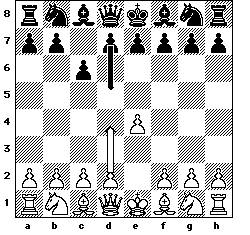
Caro Kann:
 1.e4 c6 1.e4 c6
In the Caro Kann Defense, black does not immediately challenge the white center. White should therefore immediately place another pawn there with 2.d4. Black will counter with 2...d5.
The advantage of this defense is that, unlike the French Defense, the black pawn structure does not imprison the black's white squared bishop on c8. In many lines of the Caro-Kann, black will develop this bishop to f5 or g4 before playing e6. On the other hand, the pawn on c6 robs the black knight on b8 of its natural developing square.
By the third move, white has an important decision with the pawn on e4. This pawn is under attack. White can therefore choose among three options: to capture on d5, to push the e-pawn to e5, or to defend the pawn with Nc3 or Nd2. The e5 push has become popular in recent years among masters, but all three choices remain viable.
Sources for further reading:
R.Keene et al, UNDERSTANDING THE CARO KANN DEFENSE, RHM Press, 1980
E.Varnusz, PLAY THE CARO-KANN, Maxwell MacMillan, 1991
top
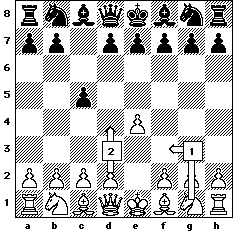
Sicilian Defense:
 1.e4 c5 1.e4 c5
The Sicilian Defense has the reputation of being black's most aggressive response to 1.e4. With 1...c5, black immediately discourages white from playing 2.d4 because black would be able to capture the pawn. In response, white would be reluctant to recapture with the queen because the queen would be extremely vulnerable in the center of the board.
In order to pursue the center, white must instead prepare d2-d4 with 2.Nf3. When white continues with d4, black will capture and white will be able to recapture with the Nf3 rather than the queen.
Black can pursue many different strategies in the Sicilian, but nearly all have one thing in common. Black will usually try to take advantage of the open c-file by placing one or more rooks and sometimes the queen there. Very often, therefore, black will castle on the kingside and pursue an attack on the queenside. By contrast, in part because the black king is on the kingside, white will attack there.
The following "variations" may provide you with a sense of the complexity of the Sicilian. Try to get a feel for the patterns of development.
The Dragon:
 1.e4 c5 2.Nf3 d6 3.d4 cxd4 4.Nxd4 Nf6 5.Nc3 g6 6.Be3 Bg7 7.f3 0-0 8.Qd2 Nc6
1.e4 c5 2.Nf3 d6 3.d4 cxd4 4.Nxd4 Nf6 5.Nc3 g6 6.Be3 Bg7 7.f3 0-0 8.Qd2 Nc6
The Velimirovic Attack:
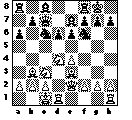 1.e4 c5 2.Nf3 d6 3.d4 cxd4 4.Nxd4 Nf6 5.Nc3 Nc6 6.Bc4 e6 7.Be3 Be7 8.Qe2 0-0 9.0-0-0 Qc7 10.Bb3 a6
1.e4 c5 2.Nf3 d6 3.d4 cxd4 4.Nxd4 Nf6 5.Nc3 Nc6 6.Bc4 e6 7.Be3 Be7 8.Qe2 0-0 9.0-0-0 Qc7 10.Bb3 a6
The Najdorf:
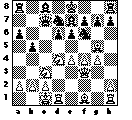 1.e4 c5 2.Nf3 d6 3.d4 cxd4 4.Nxd4 Nf6 5.Nc3 a6 6.Bg5 e6 7.f4 Be7 8.Qf3 Qc7 9.0-0-0 Nbd7 10.g4 b5
1.e4 c5 2.Nf3 d6 3.d4 cxd4 4.Nxd4 Nf6 5.Nc3 a6 6.Bg5 e6 7.f4 Be7 8.Qf3 Qc7 9.0-0-0 Nbd7 10.g4 b5
Sources for further reading
J.Edwards, THE SICILIAN: AN OVERVIEW, R&D Publishing, 1993
D.Levy, HOW TO PLAY THE SICILIAN DEFENCE, David McKay, 1978
J.Nunn and J.Gallagher, BEATING THE SICILIAN, Henry Holt, 1995
top
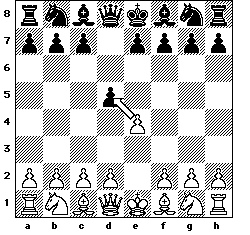
Center Counter Defense:
 1.e4 d5 1.e4 d5
With 1...d5, black immediately challenges the white center. White cannot successfully continue with 2.d4 because black would win a pawn with 2...dxe4.
But white has an excellent alternative. By simply capturing the black pawn with 2.exd5, black has an immediate problem. The only way to regain the pawn is with the queen (2...Qxd5), but we have learned that it is usually wrong to develop the queen early. That is certainly true here. After 1.e4 d5 2.exd5 Qxd5, white can develop a piece and attack the queen at the same time with 3.Nc3.
Black would then have to move the queen for a second time. White would then proceed to develop towards the center with moves such as d4, Nf3, and probably Be2 and 0-0.
Sources for further reading :
J.Grefe and J.Silman, THE CENTER COUNTER, Chess Enterprises, 1983
A.Dunne and D.Taylor, CENTER COUNTER UPRISING, Thinkers Press, 1990
top
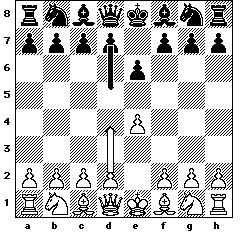
French Defense:
 1.e4 e6 1.e4 e6
In the French Defense, black does not immediately challenge the white center. White should therefore immediately place another pawn there with 2.d4. Black will counter with 2...d5.
The French has the reputation as a very solid defense, but the black pawn structure does create a lasting difficulty for black. If white seals in the center with the move e4-e5 on move three or later, black will usually have trouble finding an effective place to develop the Bc8. In a very real sense, black's early moves lock in this light-squared bishop.
White will usually play e4-e5 in order to confine the black Bc8 and Nb8 to the queen's side of the board. White will seek to trade his relatively bad dark-squared bishop for black's, and then proceed with an attack upon black's kingside. Development often involves moves such as Nf3, Bd3, and h4.
Sources for further reading:
S.Taulbut, HOW TO PLAY THE FRENCH DEFENSE, Batsford, 1983
A.Suetin, FRENCH DEFENSE, Batsford, 1982
L.Psakhis, THE COMPLETE FRENCH, Henry Holt, 1993
T.Harding, THE CLASSICAL FRENCH, MacMillan, 1991
top
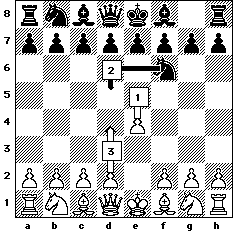
Alekhine's Defense:
 1.e4 Nf6 1.e4 Nf6
In Alekhine's Defense, black prevents white from capturing the center immediately with 2.d4 by first attacking white's pawn on e4. White has a choice. White can defend the e4-pawn with 2.Nc3, but it is far stronger to advance the e-pawn further to e5.
By so doing, white will attack the black knight on f6 and force it to move again. As you know, you usually want to develop all of your pieces before you move any one of them again. Black's strategy is unusual and not to every player's taste: to invite the white center forward where it might become weak and collapse.
White should almost certainly play 2.e5 and, after 2...Nd5, continue with 3.d4. White can then develop normally, bringing out the knights first before the bishops and likely castling on the kingside. If white is ambitious, it is possible to establish a broad pawn center with 4.c4, again attacking the black knight on d5, and then playing 5.f4 to support the pawn on e5. Not surprisingly, this is called the Four Pawns Attack in the Alekhine's.
Sources for further reading:
G.Burgess, THE COMPLETE ALEKHINE, Henry Holt, 1992
L.Christiansen, ALEKINE'S DEFENSE AS WHITE: THE FOUR PAWNS ATTACK, Thinker's Press, 1989
top
Queen's Pawn Openings:
These openings result when white moves his pawn on d2 to d4.These openings are of entirely different nature. All the openinings started with d4 result in to closed games. Here are few openings started with d4.
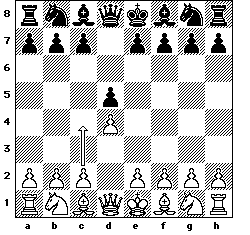
QUEEN'S GAMBIT.
 1.d4 d5 1.d4 d5
 2.c4 ... 2.c4 ...
A good opening for white. Some variations are
[Queen's gambit declined]

 2. ... e6 2. ... e6
 3.Nc3 Nf6 3.Nc3 Nf6
 4.Bg5 Be7 4.Bg5 Be7
 5.e3 etc.. 5.e3 etc..
[Exchange variation]
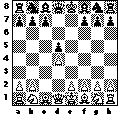
 2. .. e6 2. .. e6
 3.cd5 ed5 etc... 3.cd5 ed5 etc...
[Queen's gambit accepted]
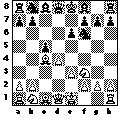
 2. ... dc4 2. ... dc4
 3.Nf3 Nf6 3.Nf3 Nf6
 4.e3 e6 4.e3 e6
 5.Bc4 c5 etc.. 5.Bc4 c5 etc..
top
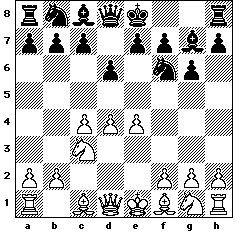
KING'S INDIAN DEFENSE.
 1.d4 Nf6 1.d4 Nf6
 2.c4 g3 2.c4 g3
 3.Nc3 Bg2 3.Nc3 Bg2
 4.e4 d6 4.e4 d6
A good defense against d4. Few variations are
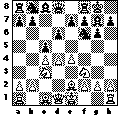
 5.Nf3 0-0 5.Nf3 0-0
 6.Be2 e5 etc.. 6.Be2 e5 etc..
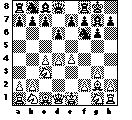
 5.g3 0-0 5.g3 0-0
 6.Bg2 etc.. 6.Bg2 etc..
[four pawn variation]
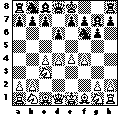
 5.f4 etc.. 5.f4 etc..
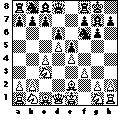  5.f3 0-0 5.f3 0-0
 6.Be3 e5 6.Be3 e5
 7.d5 etc.. 7.d5 etc..
top
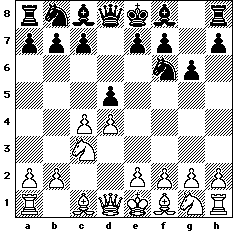
GRUNFELD DEFENSE.
 1.d4 Nf6 1.d4 Nf6
 2.c4 g6 2.c4 g6
 3.Nc3 d5 3.Nc3 d5
This seems to an unusual defense but actually it is one of the best defense against white's d4. Few variations are
  4.cd5 Nd5 4.cd5 Nd5
 5.e4 Nxc3 5.e4 Nxc3
 6.bc3 c5 or Bg7 etc.. 6.bc3 c5 or Bg7 etc..
  4.Nf3 Bg7 4.Nf3 Bg7
 5.Qb3 dc4 5.Qb3 dc4
 6.Qc4 0-0 etc.. 6.Qc4 0-0 etc..
top
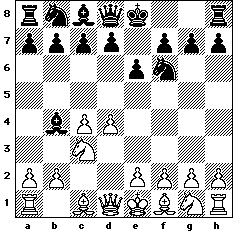 NIMZO-INDIAN DEFENSE.
 1.d4 Nf6 1.d4 Nf6
 2.c4 e6 2.c4 e6
 3.Nc3 Bb4 3.Nc3 Bb4
Again a famous defense to d4. Some variations are
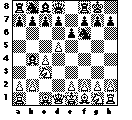
 4.e3 0-0 etc.. 4.e3 0-0 etc..
  4.Qc2 d5 4.Qc2 d5
 5.a3 Bxc3 5.a3 Bxc3
 6.Qc3 Ne4 etc.. 6.Qc3 Ne4 etc..
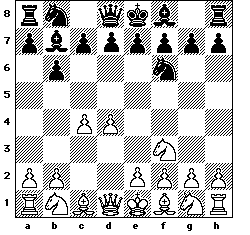 NIMZO-INDIAN DEFENSE.
 1.d4 Nf6 1.d4 Nf6
 2.Nf3 b6 2.Nf3 b6
 3.c4 Bb7 3.c4 Bb7
top
 LINKS: LINKS:
|

